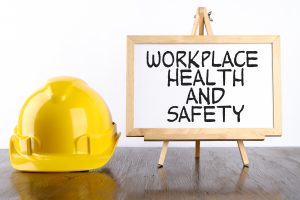 The top management of any organisation should take ultimate responsibility for occupational health and safety (OHS). As part of this, there should be a process in place that enable management to review health and safety performance.
The top management of any organisation should take ultimate responsibility for occupational health and safety (OHS). As part of this, there should be a process in place that enable management to review health and safety performance.
Reviewing health and safety performance closes the loop in the process and will inform the organisation whether it is effectively controlling risks and if the management system remains fit for purpose.
Focusing on the key words, the various standards available note the review should check that the system is:
The Health and Safety Executive (HSE) takes a slightly more simplified approach and suggests that the purpose of the review is to establish whether the principles of strong and active leadership, worker involvement, and assessment and review have been embedded in the organisation.
Whatever the purpose, a management review, like other functions, will require thought and planning to achieve the necessary outcomes of the review process.
As the phrase suggests, management reviews must be led by top management and as such, the executive holding responsibility for health and safety should have the authority and remit to undertake the management review.
Key to the success of the management review process is ensuring the right inputs in terms of information and data. According to ISO 45001, this will be based around the elements of the management system and will include:
In addition, the HSE publication INDG417 suggests that a management review should examine whether:
Similarly, BS 18004 makes recommendations as to inputs into the management review process including any organisation-specific leading and lagging performance indicators. It also suggests the following be considered.
There will be outcomes from any management review process. Both ISO 45001 and BS 45002 state that the management review should draw a conclusion as to the continuing suitability and effectiveness of the occupational health and safety management system.
Outcomes should include decisions related to:
Changes required will clearly be organisation-specific and can address any element of the management system including changes to the H&S policy, revised objectives, increased need for competency, etc.
One of the key purposes of a cyclical management system is to take opportunities for continual improvement. This can be influenced not just by identified shortfalls in performance against benchmarked best practice, but also by identifying where new technologies, for example, can reduce risks that do not exceed excessive costs. Other improvements could relate to ensuring the system is fully aligned as an integral part of the business.
Any change or improvement may have resource implications and the management review should identify what these resource implications are. The process for managing change will depend on the types of outcomes from the review process.
The outcomes of the management review should be communicated and where necessary consulted on with relevant stakeholders both internal and external to the organisation.
However, it may be the case that the outcomes and recommendations may require top management review and approval prior to being released into the public domain and implemented. This will very much depend on the sensitivity of the outcomes and the organisation culture.
Adequate records also need to be kept that ensure the findings of the review process are available to relevant parties such as enforcing authorities, staff representatives, those undertaking future management reviews, insurers, etc.
BS 18004 recommends that the outputs should be “incorporated within performance reports for communication to their various stakeholders”. This could include annual reports to investors, corporate governance and social responsibility statements.
Finally, where the management review indicates areas of good performance or even performance beyond the objectives set, top management may wish to celebrate this and recognise/reward those responsible for good performance levels.
Contact Walker Health and Safety Services for further advice.